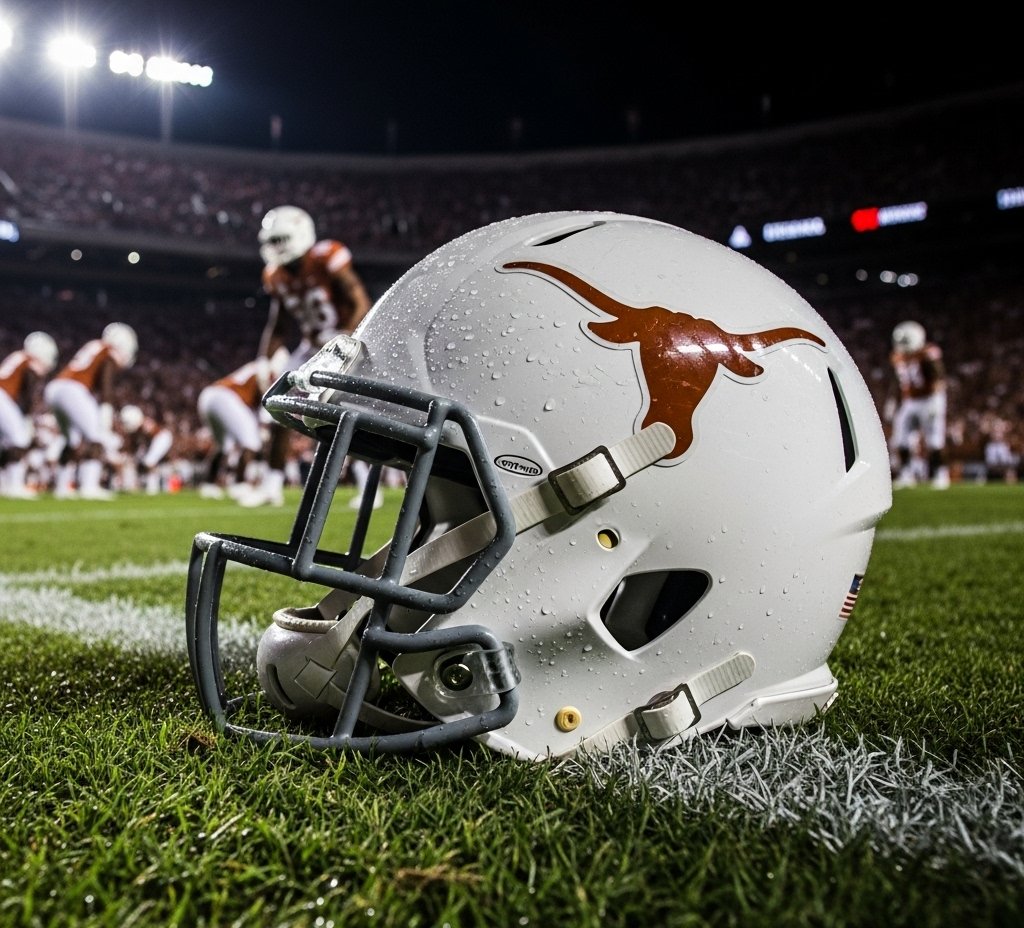When people think of Texas football, a powerful image immediately comes to mind: the clean white helmet adorned with the iconic burnt orange Longhorn logo. The Texas football helmet is one of the most recognizable symbols in college sports. More than just protective gear, it represents a proud tradition, a culture of excellence, and the fierce spirit of the University of Texas Longhorns.
This article takes a deep look into the history, design, cultural meaning, and modern role of the Texas football helmet — exploring why it has become such an enduring symbol for both players and fans.
The Origins of the Texas Football Helmet
The earliest versions of football helmets were crude leather caps, offering little protection. They had no team markings, no colors, and no flair. By the mid-20th century, however, teams began experimenting with painted shells and distinctive designs.
For the Texas Longhorns, the breakthrough came when they adopted their official school colors — burnt orange and white — in the 1920s. These colors became the foundation for the team’s identity. By the 1960s, the helmet had evolved into the now-famous white shell with the burnt orange Longhorn silhouette.
It was more than just a piece of equipment; it became a badge of honor. Every player who wore it carried with them the pride of the state and the expectations of generations of fans.
Why Burnt Orange?
The burnt orange shade chosen for the Texas football helmet is one of the most distinctive in college athletics. Unlike brighter oranges used by other teams, this deeper, richer color reflects the rugged Texas landscape.
The Longhorn logo in burnt orange represents:
Strength and resilience.
A unique identity that sets Texas apart from rivals.
Tradition that connects past players to present ones.
The pairing of the white helmet and burnt orange logo creates a clean, striking look that instantly commands attention on the field.
Evolution of the Helmet Design
While the Texas football helmet has stayed remarkably consistent, subtle variations have occurred over the decades.
Early Designs
In the 1950s and 60s, helmets sometimes featured player numbers alongside the Longhorn logo.
At times, stripes were added down the center of the helmet for extra flair.
Centennial Edition (1969)
During the 100th anniversary of college football, the Longhorns sported a commemorative decal with “100” inside a football shape. This one-year design remains a fan favorite for collectors.
Standardization (1970s–1990s)
The program settled into the now-classic look: a white helmet with a single burnt orange Longhorn logo on each side. Clean, simple, and timeless.
Modern Adjustments
While the design has stayed the same, technology has advanced. Helmets today are lighter, stronger, and safer, with improved padding and facemasks designed to protect players from head injuries.
The Helmet as a Symbol of Texas Pride
Few helmets in college football carry as much weight as the Texas football helmet. Its significance goes far beyond the field:
Tradition – Decades of championships and legendary games have been played under this design.
Unity – Fans across the state instantly rally around the sight of the helmet.
Recruiting Power – High school athletes dream of the moment they get to put it on.
Cultural Identity – In a state where football is almost a religion, the helmet is a sacred emblem.
Legendary Players Who Made the Helmet Famous
The Texas football helmet has been worn by some of the greatest players in college football history. Each of them left an imprint on the legacy of the helmet:
Earl Campbell – The 1977 Heisman Trophy winner, known for his powerful running style.
Ricky Williams – One of the most dominant running backs in NCAA history, winner of the 1998 Heisman.
Vince Young – Remembered for leading Texas to victory in the unforgettable 2006 Rose Bowl against USC.
Colt McCoy – A record-setting quarterback who led the Longhorns during one of their most successful stretches.
Every highlight, every championship moment, and every rivalry victory has been accompanied by the gleam of the Texas helmet under the stadium lights.
Rivalries and the Helmet’s Role
The Texas football helmet takes on even greater meaning during rivalry games.
Red River Showdown (vs. Oklahoma) – The clash of burnt orange and crimson helmets at the Cotton Bowl is one of the most iconic sights in sports.
Texas vs. Texas A&M – Though the rivalry has paused in recent years, the battles between the Longhorns and Aggies were always marked by fierce pride in the helmet each team wore.
Other In-State Rivalries – Matchups with Baylor, TCU, and Texas Tech pit the Longhorn helmet against other Texas schools, reinforcing its symbolic role as the flagship of the state.
Modern Helmet Technology
While the design has remained simple, the construction of the helmet has advanced tremendously. Today’s helmets balance tradition with cutting-edge safety features:
Polycarbonate Shells – Strong and lightweight.
Impact-Absorbing Padding – Reduces the risk of concussions.
Custom Fit Systems – Ensures maximum comfort and security for each player.
Innovative Facemasks – Provide both protection and visibility.
The Texas football helmet shows how tradition can coexist with modern innovation.
Collectibles and Fan Culture
For fans, the Texas football helmet is more than something worn by athletes — it’s a piece of personal identity. Mini helmets, replicas, and full-sized versions are among the most popular merchandise items. Many fans proudly display them at home, in offices, or at tailgates.
Wearing or owning a Longhorn helmet isn’t just about supporting a team — it’s about celebrating a culture, a tradition, and a way of life tied to Texas football.
Alternate Helmets and Special Editions
Unlike many programs that frequently change their look, Texas has stayed true to its classic helmet design. However, on rare occasions, special editions appear:
Throwback Helmets – Versions that highlight earlier styles with numbers or stripes.
Commemorative Helmets – Used for special anniversaries or historic games.
Glossy or Matte Finishes – Minor variations that modernize the traditional design without altering its identity.
These occasional changes keep fans engaged while preserving the overall tradition.
The Texas Football Helmet Compared to Other Programs
College football is full of iconic helmets: Michigan’s winged design, Notre Dame’s gold, Alabama’s crimson with numbers. Yet the Texas helmet holds a unique place.
Its clean simplicity, instantly recognizable logo, and strong association with state pride give it a level of cultural power few helmets can match. It’s not just a design; it’s a statement of who the Longhorns are and what they represent.
The Future of the Texas Football Helmet
Looking ahead, the Texas football helmet will likely remain true to its roots. The burnt orange Longhorn on a white shell has stood the test of time and is unlikely to be replaced.
Future changes will focus on safety and performance, with advances in materials and padding. Occasional alternate versions may appear for special occasions, but the essence of the helmet — simple, bold, and iconic — will endure.
Conclusion
The Texas football helmet is more than protective equipment. It is a powerful symbol of tradition, pride, and excellence. From its beginnings as a simple leather cap to its modern design that blends history with innovation, the helmet tells the story of the University of Texas football program.
Every time a player straps it on, they are not just preparing for a game — they are joining a legacy of champions, legends, and unforgettable moments. For fans, the helmet represents loyalty and pride. For rivals, it signals one of the toughest challenges in college football.
The Texas football helmet is not only part of the game — it’s part of Texas itself.

